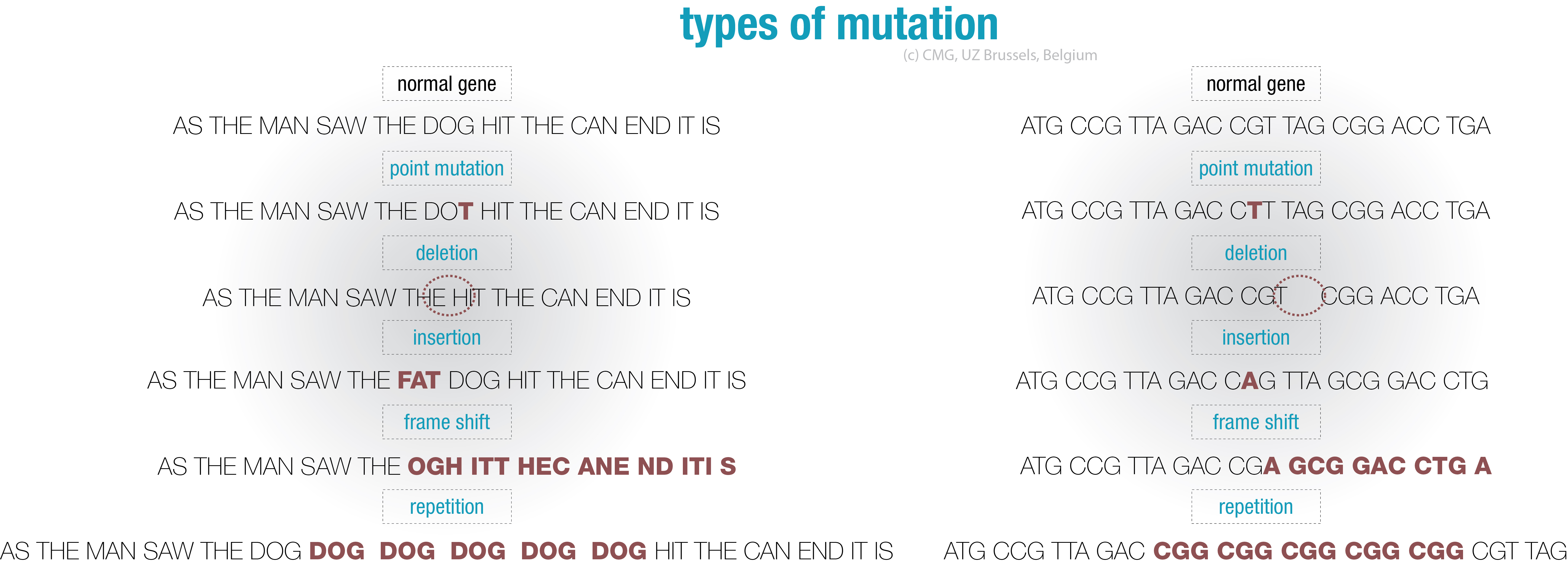At DNA level
Continue reading below the image.
Repeats
STRs or Short Tandem Repeats are short repetitions of nucleotides. These are typically found within nonsense text, where they make little difference. They do, however, make the nonsense unique as compared with another person's nonsense.
Overall, genetic material does not differ much from one person to another. One of the variations between individuals is precisely in the length and frequency of STRs or repeats. Since these can vary considerably, even between different branches of the same family, we can also use them to demonstrate the degree of relationship between individuals.
In the PGD laboratory, repeats serve as points of recognition: since they have a different pattern in the genes from each parent, we can use them to determine which gene the embryo has inherited from the father and which one from the mother.
Nevertheless the STRs are sometimes enclosed within genes and their length may have an effect on protein function. As a result they may cause a genetic disorder, depending on their position in the genome, their length and whether or not they are inherited in a stable way.
Repeats and the associated pathology are best compared with a stutter: if you stumble briefly over a specific word you can still be understood, but if you carry on stuttering and cannot get the sentence out, your instruction will not be understood and consequently will not be carried out (correctly).
Deletion, duplication and insertion
Like chromosomes, genes can be completely or partly lost or duplicated during cell division. Another piece may also spontaneously join itself to a gene.
At the gene level, a complete or partial abnormality of this kind can sometimes be difficult to trace. This is because many of the standard techniques that are used are unable to distinguish between two identical genes or exons and those that may have been deleted or duplicated.
It is therefore not always obvious that part of the gene has been lost or duplicated.
Sometimes only one or a small number of nucleotides has been lost or duplicated, or one or more nucleotides are added. These are easier to trace. For example we know that a deletion of 3 nucleotides - representing 1 codon - (F508del) causes cystic fibrosis.
Point mutation
Point mutations are common coding errors in which one base in our DNA is replaced by another. Point variations that occur in the general population are called Single Nucleotide Polymorphisms (SNP).
On average one SNP occurs in every 1,000 bases, so that every human being has about one million SNPs. These usually have no effect.
A point mutation may, however, also occur in a gene and the function of the protein may be altered, reduced or lost as a result. Sickle cell anaemia is an example of this: due to a point mutation the protein which is formed (haemoglobin) undergoes a structural change and does not function properly.
